 Welcome to my blog! The week of 2 July – 9 July, I’m participating with more than one hundred other bloggers in the “Freedom to Read” giveaway hop, accessed by clicking on the logo at the left. All blogs listed in this hop offer book-related giveaways, and we’re all linked, so you can easily hop from one giveaway to another. But here on my blog, I’m posting a week of Relevant History essays, each one focused on some facet of the American War of Independence. To find out how to qualify for the giveaways on my blog, read through each day’s Relevant History post below and follow the directions. Then click on the Freedom Hop logo so you can move along to another blog. Enjoy!
Welcome to my blog! The week of 2 July – 9 July, I’m participating with more than one hundred other bloggers in the “Freedom to Read” giveaway hop, accessed by clicking on the logo at the left. All blogs listed in this hop offer book-related giveaways, and we’re all linked, so you can easily hop from one giveaway to another. But here on my blog, I’m posting a week of Relevant History essays, each one focused on some facet of the American War of Independence. To find out how to qualify for the giveaways on my blog, read through each day’s Relevant History post below and follow the directions. Then click on the Freedom Hop logo so you can move along to another blog. Enjoy!
 Relevant History welcomes Lars D. H. Hedbor, a novelist of the American Revolution, focusing on the everyday experiences of ordinary people during that extraordinary era of chaotic change. The novels of his Tales From a Revolution series—The Prize, The Light, The Smoke, and now, The Declaration—examine little-known aspects of the Revolution, and are each set in a different Colony or future state. Hedbor resides in the Pacific Northwest with his wife and five daughters and enjoys practicing fiddle, homebrewing and amateur astronomy when he’s not otherwise occupied. For more information, check his web site, and look for him on Facebook and Twitter.
Relevant History welcomes Lars D. H. Hedbor, a novelist of the American Revolution, focusing on the everyday experiences of ordinary people during that extraordinary era of chaotic change. The novels of his Tales From a Revolution series—The Prize, The Light, The Smoke, and now, The Declaration—examine little-known aspects of the Revolution, and are each set in a different Colony or future state. Hedbor resides in the Pacific Northwest with his wife and five daughters and enjoys practicing fiddle, homebrewing and amateur astronomy when he’s not otherwise occupied. For more information, check his web site, and look for him on Facebook and Twitter.
*****
Most popular histories of the American Revolution focus on the events of the northern Colonies, where, indeed, many of the pivotal moments of the war and the philosophy of governance that animated the movement for independence were centered. However, the southern Colonies were also crucial to the eventual success of the war, both because it provided crucial logistical routes to move goods for both military and civilian needs despite the forced closure of ports at Boston and New York, but also because many of the leading figures of the Revolution originated in the South.
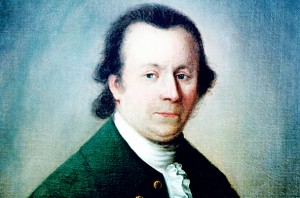 To be sure, there was greater support for the Crown in the South than in the North, in part because of the same deeply-held cultural resistance to change that characterizes the Deep South of the modern era, and in part because of the wildly different social structure of the plantations as compared to the North’s more typical smallholders. However, there was no shortage of Patriot hotheads south of the future Mason-Dixon line in the heady days leading to the outright break with England: men such as Button Gwinnett, William Polk, and Samuel Wear.
To be sure, there was greater support for the Crown in the South than in the North, in part because of the same deeply-held cultural resistance to change that characterizes the Deep South of the modern era, and in part because of the wildly different social structure of the plantations as compared to the North’s more typical smallholders. However, there was no shortage of Patriot hotheads south of the future Mason-Dixon line in the heady days leading to the outright break with England: men such as Button Gwinnett, William Polk, and Samuel Wear.
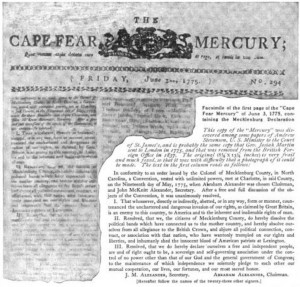 While no copy of it has been found (yet), the 20 May 1775 declaration by a gathering of delegates from militia companies around Mecklenburg County, North Carolina that they were a “free and independent people” would have anticipated the Continental Congress’ Declaration of Independence by over a full year. The existence of this earlier declaration has aroused no lack of controversy over the years, including at least one fraudulent re-creation of its supposed original publication in the Cape Fear Mercury in June of 1775.
While no copy of it has been found (yet), the 20 May 1775 declaration by a gathering of delegates from militia companies around Mecklenburg County, North Carolina that they were a “free and independent people” would have anticipated the Continental Congress’ Declaration of Independence by over a full year. The existence of this earlier declaration has aroused no lack of controversy over the years, including at least one fraudulent re-creation of its supposed original publication in the Cape Fear Mercury in June of 1775.
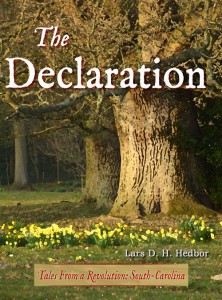 As it is, the well-documented Mecklenburg Resolves of May 31, 1775 were fully as radical as anything adopted in the northern Colonies, and the historical record is unambiguous about the vigor of various Committees of Correspondence, and later, well-armed Committees of Safety across the southern Colonies. Of course, as imagined in the pages of The Declaration, the discovery in an old family chest stashed away in the corner of some dusty attic of an authentic copy of the alleged Mecklenburg Declaration would reinvigorate the claim by proud North Carolinians of their special role in the drive toward eventual American independence.
As it is, the well-documented Mecklenburg Resolves of May 31, 1775 were fully as radical as anything adopted in the northern Colonies, and the historical record is unambiguous about the vigor of various Committees of Correspondence, and later, well-armed Committees of Safety across the southern Colonies. Of course, as imagined in the pages of The Declaration, the discovery in an old family chest stashed away in the corner of some dusty attic of an authentic copy of the alleged Mecklenburg Declaration would reinvigorate the claim by proud North Carolinians of their special role in the drive toward eventual American independence.
It may be that part of the reason that our popular memory of the Revolution omits most of the events in the southern Colonies is simply that it was there that the American cause suffered its greatest defeats. With the active assistance of Loyalist forces, the British conquered and occupied most of the southern Colonies until the waning days of the war in the north.
The occupation was ungentle, even brutal at times, and the suffering of those who had stood against the Crown has received some attention in a film of recent years, but is still largely forgotten. Forced to sign loyalty oaths, dispossessed of their property (both real estate and other), and even subjected to violence at the hands of Loyalists, those who had supported the rebellion against Britain paid a high price for their convictions.
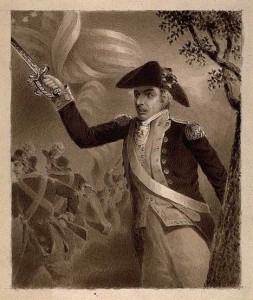 In the end, however, the rebellious Americans prevailed, and between the efforts of the well-known “Swamp Fox” General Marion and the pivotal battle at Cowpens, they ejected the British from the south, driving them northward to their ultimate defeat at Yorktown. The heroic efforts of the Patriots of the southern Colonies have long been overdue for greater recognition, and I am glad to do some small part toward that in telling the story of some of the people who made huge sacrifices and achieved stunning victories in our movement from subjects of the Crown to citizens of the Republic.
In the end, however, the rebellious Americans prevailed, and between the efforts of the well-known “Swamp Fox” General Marion and the pivotal battle at Cowpens, they ejected the British from the south, driving them northward to their ultimate defeat at Yorktown. The heroic efforts of the Patriots of the southern Colonies have long been overdue for greater recognition, and I am glad to do some small part toward that in telling the story of some of the people who made huge sacrifices and achieved stunning victories in our movement from subjects of the Crown to citizens of the Republic.
*****
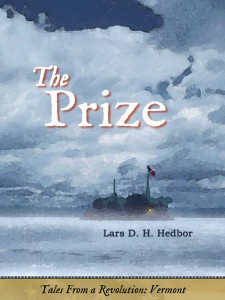

 A big thanks to Lars Hedbor. He’ll give away a signed paperback set of the first three books in the series to someone who contributes a legitimate comment on this post today or tomorrow. Delivery is available within the U.S. and Canada. Make sure you include your email address. I’ll choose one winner from among those who comment on this post by Thursday 3 July at 6 p.m. ET, then publish the name of all drawing winners on my blog the week of 14 July. And anyone who comments on this post by the 3 July deadline will also be entered in a drawing to win a copy of one of my five books, the winner’s choice of title and format (trade paperback or ebook).
A big thanks to Lars Hedbor. He’ll give away a signed paperback set of the first three books in the series to someone who contributes a legitimate comment on this post today or tomorrow. Delivery is available within the U.S. and Canada. Make sure you include your email address. I’ll choose one winner from among those who comment on this post by Thursday 3 July at 6 p.m. ET, then publish the name of all drawing winners on my blog the week of 14 July. And anyone who comments on this post by the 3 July deadline will also be entered in a drawing to win a copy of one of my five books, the winner’s choice of title and format (trade paperback or ebook).
**********
Did you like what you read? Learn about downloads, discounts, and special offers from Relevant History authors and Suzanne Adair. Subscribe to Suzanne’s free newsletter.









